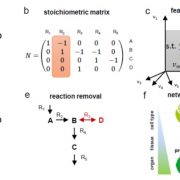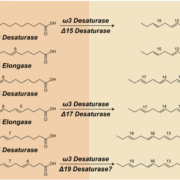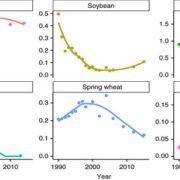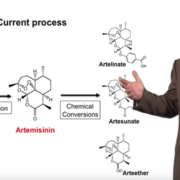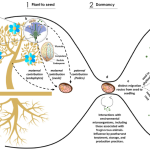Review: Hypes, hopes, and the way forward for microalgal biotechnology
 Microalgae are small, photosynthetic algae that have emerged as important contributors to food and nutrient production. This review describes the many ways they can be grown (e.g., autotrophic, with sunlight or artificial light; heterotrophic, with sugar inputs; or mixotrophic, a combination of both) and the many things they can produce. Interestingly, the mixotrophic method can be quite efficient in part because the O2 evolved during photosynthesis is captured for use in respiration and the CO2 is similarly recycled, decreasing the need to de-gas the cultures. Per unit of area, microalgae can greatly outproduce crop plants, and can be sources of protein, carbohydrates and/or lipids (including “fish” oils). They are also amenable to genetic engineering so can produce high-value products such as oral vaccines or antibodies. The review provides calculations for efficiencies considering various inputs and outputs, as well as the advantages and disadvantages compared to other systems for the production of protein therapeutics, demonstrating the current potential of microalgal methods. Further, the authors observe, “There is room for development”. (Summary by Mary Williams @PlantTeaching) Trends Biotechnol.10.1016/j.tibtech.2022.12.017
Microalgae are small, photosynthetic algae that have emerged as important contributors to food and nutrient production. This review describes the many ways they can be grown (e.g., autotrophic, with sunlight or artificial light; heterotrophic, with sugar inputs; or mixotrophic, a combination of both) and the many things they can produce. Interestingly, the mixotrophic method can be quite efficient in part because the O2 evolved during photosynthesis is captured for use in respiration and the CO2 is similarly recycled, decreasing the need to de-gas the cultures. Per unit of area, microalgae can greatly outproduce crop plants, and can be sources of protein, carbohydrates and/or lipids (including “fish” oils). They are also amenable to genetic engineering so can produce high-value products such as oral vaccines or antibodies. The review provides calculations for efficiencies considering various inputs and outputs, as well as the advantages and disadvantages compared to other systems for the production of protein therapeutics, demonstrating the current potential of microalgal methods. Further, the authors observe, “There is room for development”. (Summary by Mary Williams @PlantTeaching) Trends Biotechnol.10.1016/j.tibtech.2022.12.017


